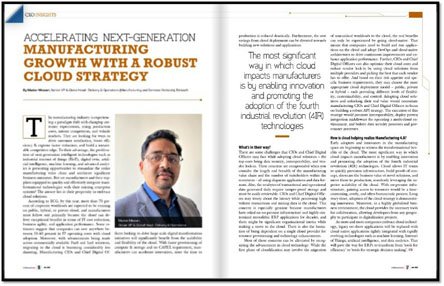To their advantage, the proliferation of next-generation intelligent technologies such as industrial internet of things (IIoT), digital twin, artificial intelligence, machine learning, and advanced analytics is presenting opportunities to streamline the entire manufacturing value chain and accelerate significant business outcomes. But, are manufacturers and their suppliers equipped to quickly and effectively integrate transformational technologies with their existing enterprise systems? The answer lies in their propensity to embrace cloud solutions.
According to BCG, by this year, more than 70% of corporate workloads are expected to be running on public-, hybrid-, or private-cloud. And manufacturers must follow suit. Primarily because the cloud can deliver exceptional benefits in terms of IT cost reduction, business agility, and application performance. Some estimates suggest companies can save anywhere between 15-40 percent in IT operating costs with cloud adoption. Moreover, with advancements being made across commercially available PaaS and IaaS solutions, migrating to the cloud is becoming considerably less daunting. Manufacturing CIOs and Chief Digital Officers looking to drive large scale digital transformation initiatives will significantly benefit from the scalability and flexibility of the cloud. With faster provisioning of compute and storage and no CAPEX requirement, manufacturers can accelerate innovation since the time to production is reduced drastically. Furthermore, the cost savings from cloud deployment can be diverted towards building new solutions and applications.




